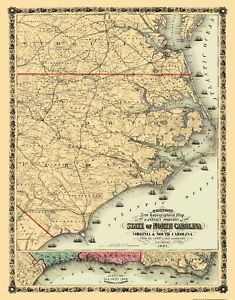 Standing 6’2″, North Carolinian James Jenkins, 22 years of age, today musters into service with the 2nd North Carolina Colored Infantry at Portsmouth, Virginia. Jenkins is a free black, likely a mulatto. Service in the United States Army is important to the young man.
Standing 6’2″, North Carolinian James Jenkins, 22 years of age, today musters into service with the 2nd North Carolina Colored Infantry at Portsmouth, Virginia. Jenkins is a free black, likely a mulatto. Service in the United States Army is important to the young man.
After Private James Jenkins had gotten the brass letter, U.S., an eagle on his button, a musket on his shoulder and bullets in his pocket, there is no power on earth that could deny that he had earned the right to citizenship.
On February 8, 1864 the 2nd North Carolina Colored Regiment reorganizes as the 36th U.S. Colored Regiment. Jenkins survives the war, mustering out on June 5, 1865. He then returns to North Carolina and settles into a life of farming, preaching and raising a family. James and wife Melinda (Hoskins) become the parents of six children.
Jenkins becomes ordained as a Baptist minister and serves with the Lebanon Grove Baptist Missionary Church in Gatesville, North Carolina. He is an active leader in the Roanoke Missionary Baptist Association for many years, and is honored by the association in May 1913 following Jenkins’ death in 1912.
Since our last session (1912) the most dreaded enemy, death has stolen into our midst, wrecked many houses, left bereaved families, and rob(b)ed the communities of noble and worthy citizens. Among those whom he served warrant were the venerable and sagacious father in Israel, Rev. James Jenkins, whom he summoned on the 24th day of last November, (1912).
Jenkins is buried in the church cemetery at the Lebanon Grove Baptist Missionary Church.
Sources: Linwood Morings Boone, The Chronological History of the Roanoke Missionary Baptist Association and its Founders from 1866 to 1966, Volume 1, AuthorHouse, 2012, p. 80 (link); James K. Bryant, The 36th Infantry United States Colored Troops in the Civil War: A History and Roster, Jefferson, N.C.: McFarland, 2012, p. 158 (link); Descriptive Rolls, 36th Regiment, U. S. Colored Troops (link)


